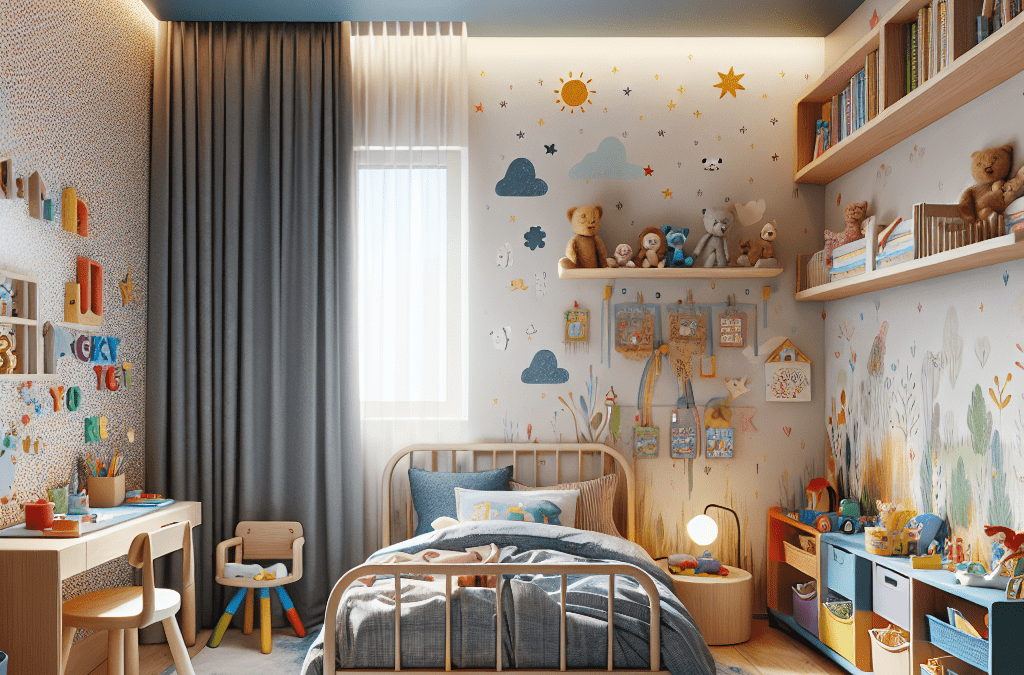Titolo: Designing Kid-Friendly Spaces: Innovative Trends in Children’s Bedrooms
In the rapidly evolving field of interior design, designers are continually challenged to create spaces that are both functional and aesthetcsally pleasing. A particularly inspiring area of focus lies in the design of children’s bedrooms, or “camerette,” as they’re known in Italy. These intimate spaces are fusing aesthetics, functionality, comfort, safety, and imagination to foster a suitable environment for children to sleep, play, learn, and grow.
In this article, we’ll explore some top trends in baby and children’s bedroom design and share ideas you could consider for your child’s space.
1. Dynamic Spaces
The traditional model of children’s bedroom design is getting a dynamic upgrade. It is not just about fixing pieces of furniture and decor items in one place, rather designers are now focusing on creating flexible layouts that adapt to a child’s growth. Adjustable desks, convertible beds, and room layout flexibility ensure the room changes as the kid grows, as well as taking into consideration their changing tastes, interests, and needs.
2. Smart Storage
Space is often a constraint in children’s rooms, thus smart storage solutions are essential. Customized shelving, underbed storage, and multi-purpose furniture pieces provide ample space for clothes, toys, books, and other items. The aim is to reduce clutter and create a clean, organized room that promotes focus and creativity.
3. Playful yet Educational Aesthetics
Designing a room that captivates a child’s attention while also encouraging learning is a win-win. Interactive wallpapers with alphabets, numbers or interesting trivia can foster the learning process. A section of the room can have a small library or a dedicated space for crafts and painting promoting them to learn while playing.
4. Biophilic Design
Children’s affinity for the outdoors makes the concept of biophilic design all the more relevant. This design approach emphasizes a connection to nature and includes features like large windows for natural light, nature-themed wallpapers or wall colors, using natural materials, and bringing in plants for a touch of greenery.
5. Light it Up
Lighting plays a significant role in a child’s room. Apart from the main ceiling light, consider including a variety of lighting sources. Bedside lamps for reading, soft lighting for winding down before bedtime, or interesting-shaped lights can make the room more engaging.
6. Safety First
Never compromising on safety, ensure all elements within the room are child-proof. This includes securing furniture to walls to prevent toppling, using rounded accessories to avoid sharp edges, incorporating slip-resistant rugs, and choosing non-toxic paint and materials.
Ultimately, a well-designed children’s bedroom can shape their character, stimulate creativity, and make them feel secure. By combining enjoyable aesthetics with practical solutions, designers can create a successful, child-centered space.
However, remember, the best way to design a “cameretta” for your child is to involve them in the process. Talk about what they would like in their room, their favorite colors or themes, hobbies, etc. This will make the room truly theirs, adding that personal touch which makes it all the more special.
As the world of interior design continues to evolve, our approaches towards children’s bedroom design must also innovate and expand for toddler-friendly games, preteen hobbies, and everything in between, all while maintaining high safety standards. After all, the goal is to create spaces where children feel truly at home.
